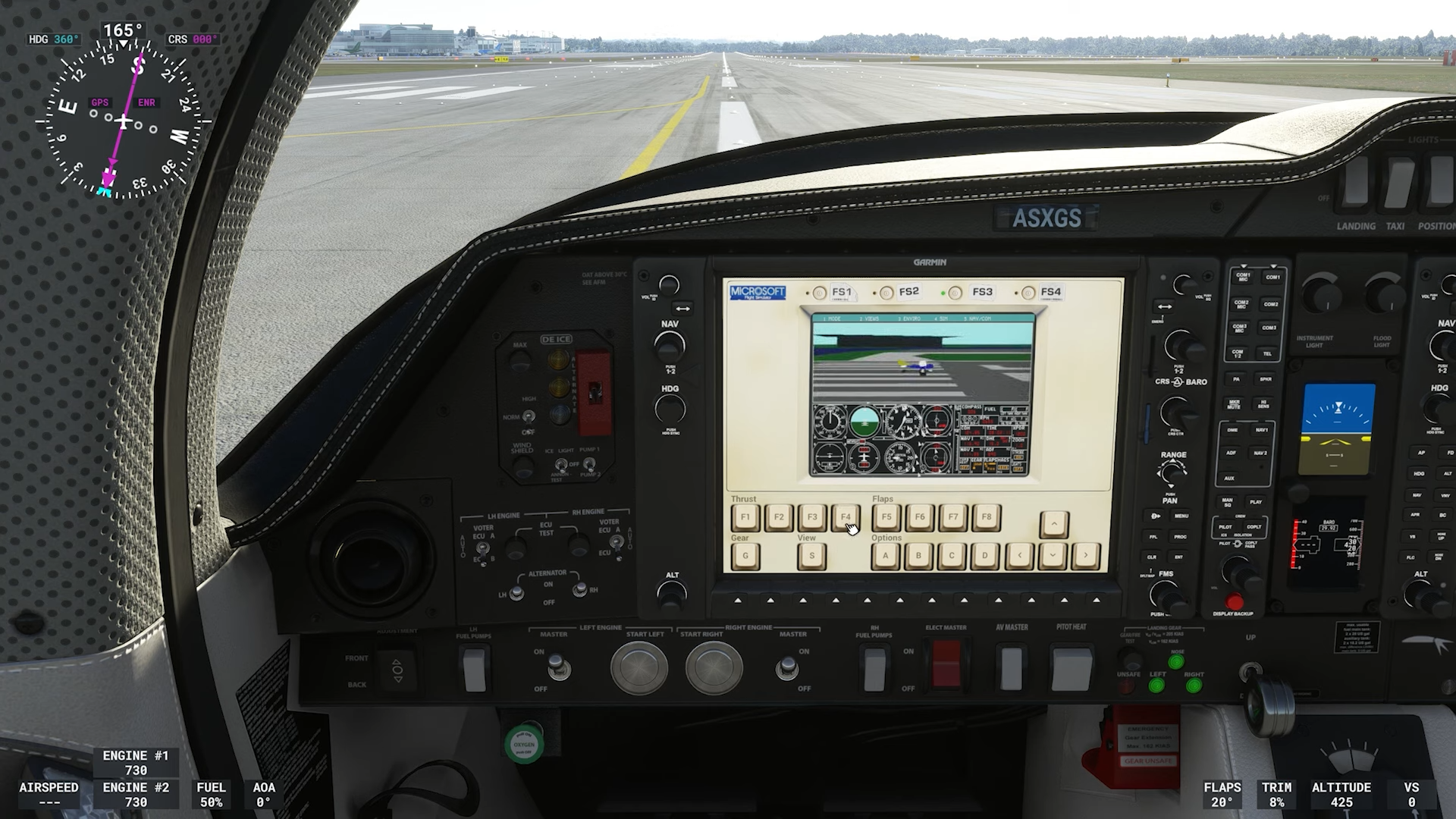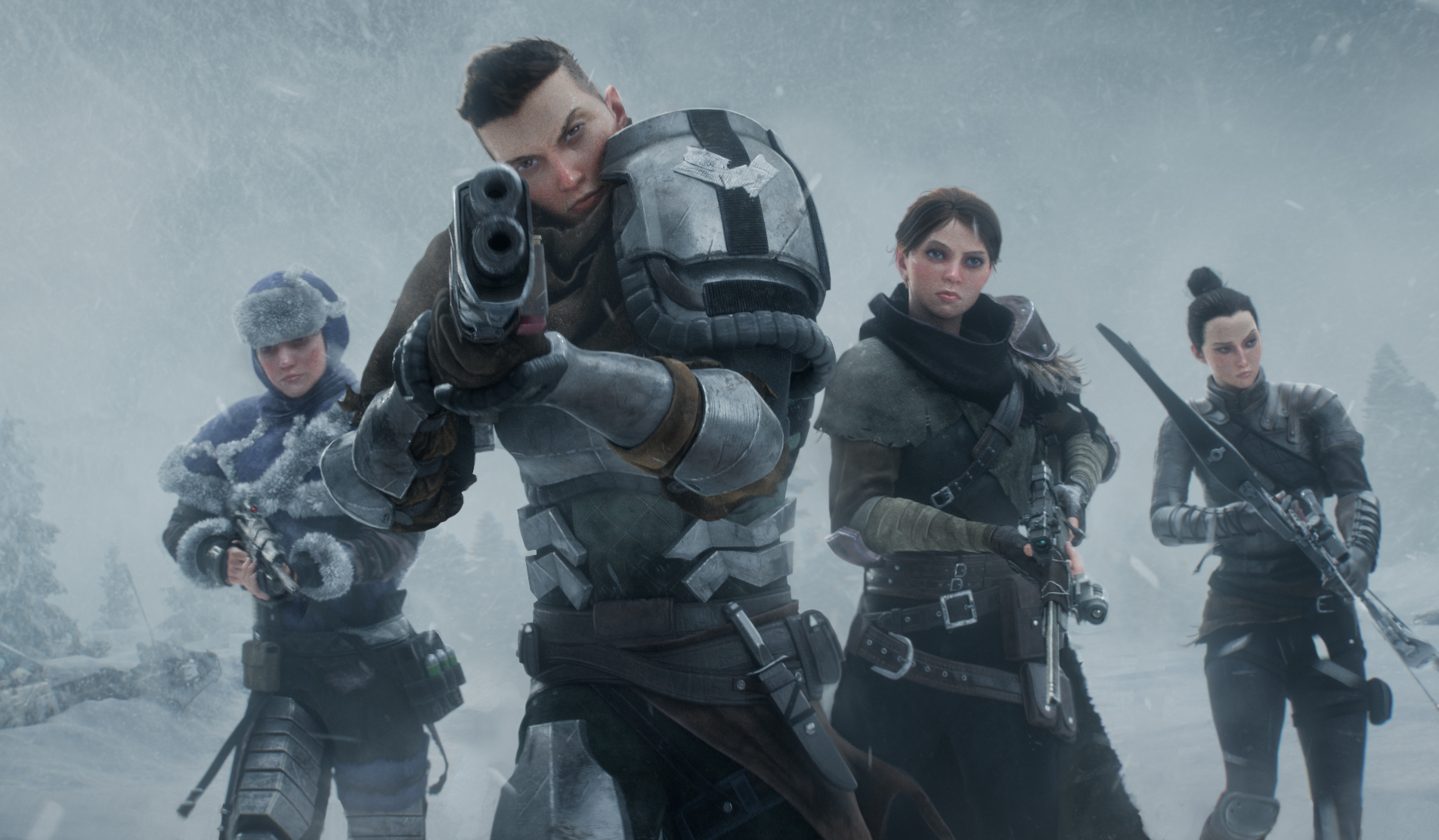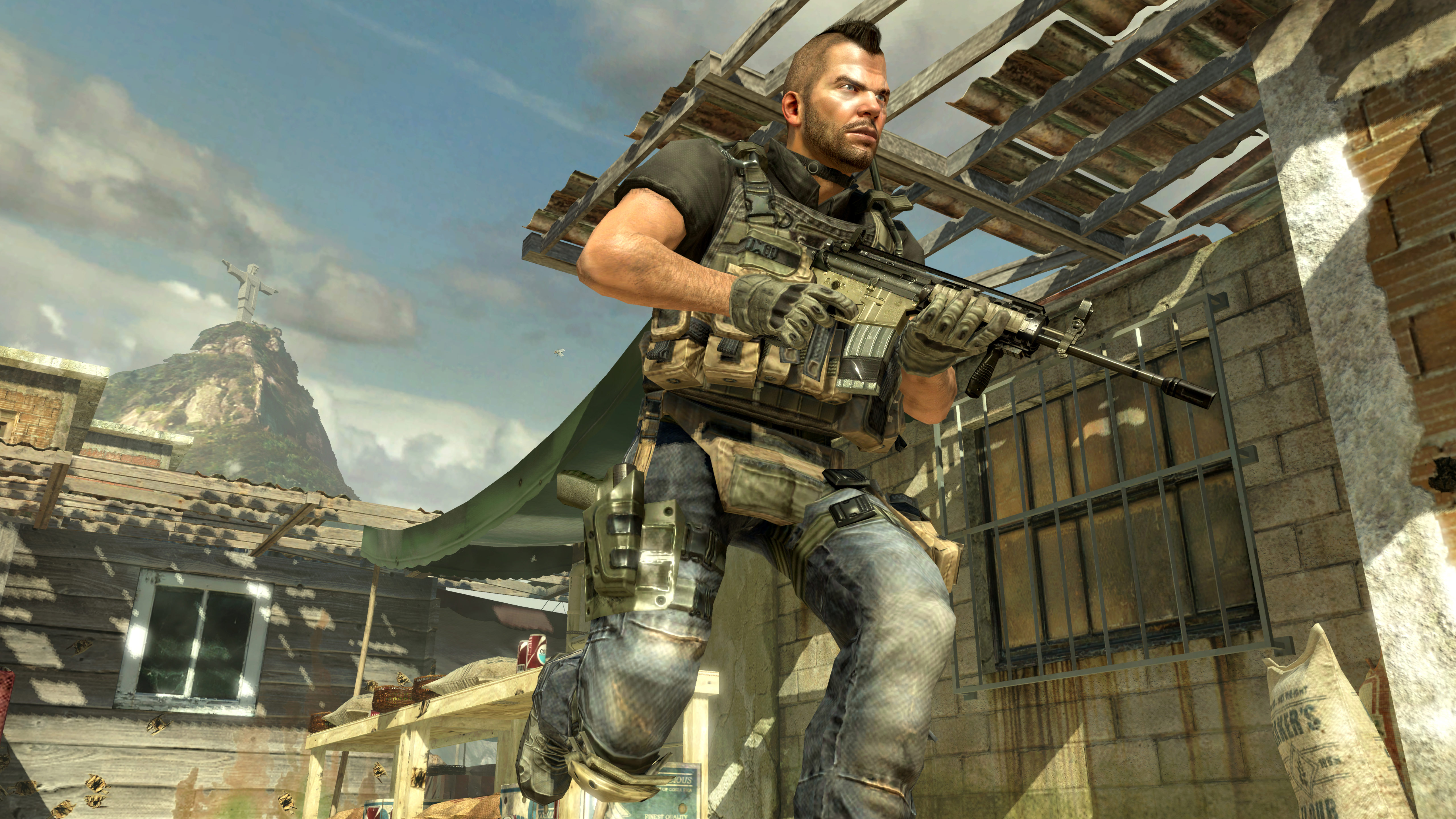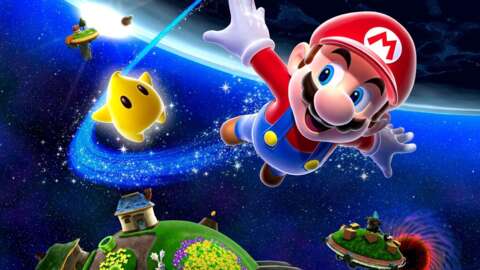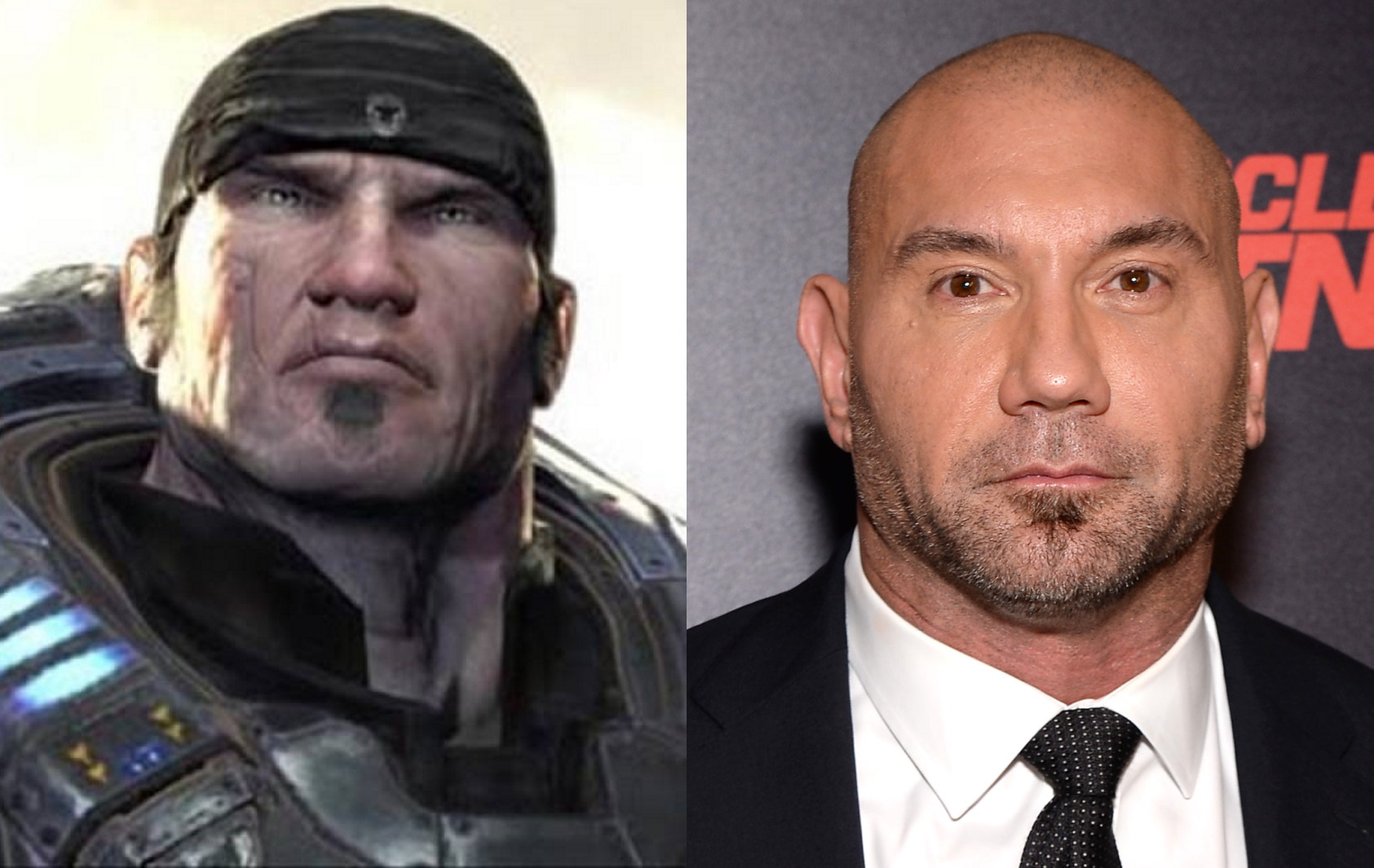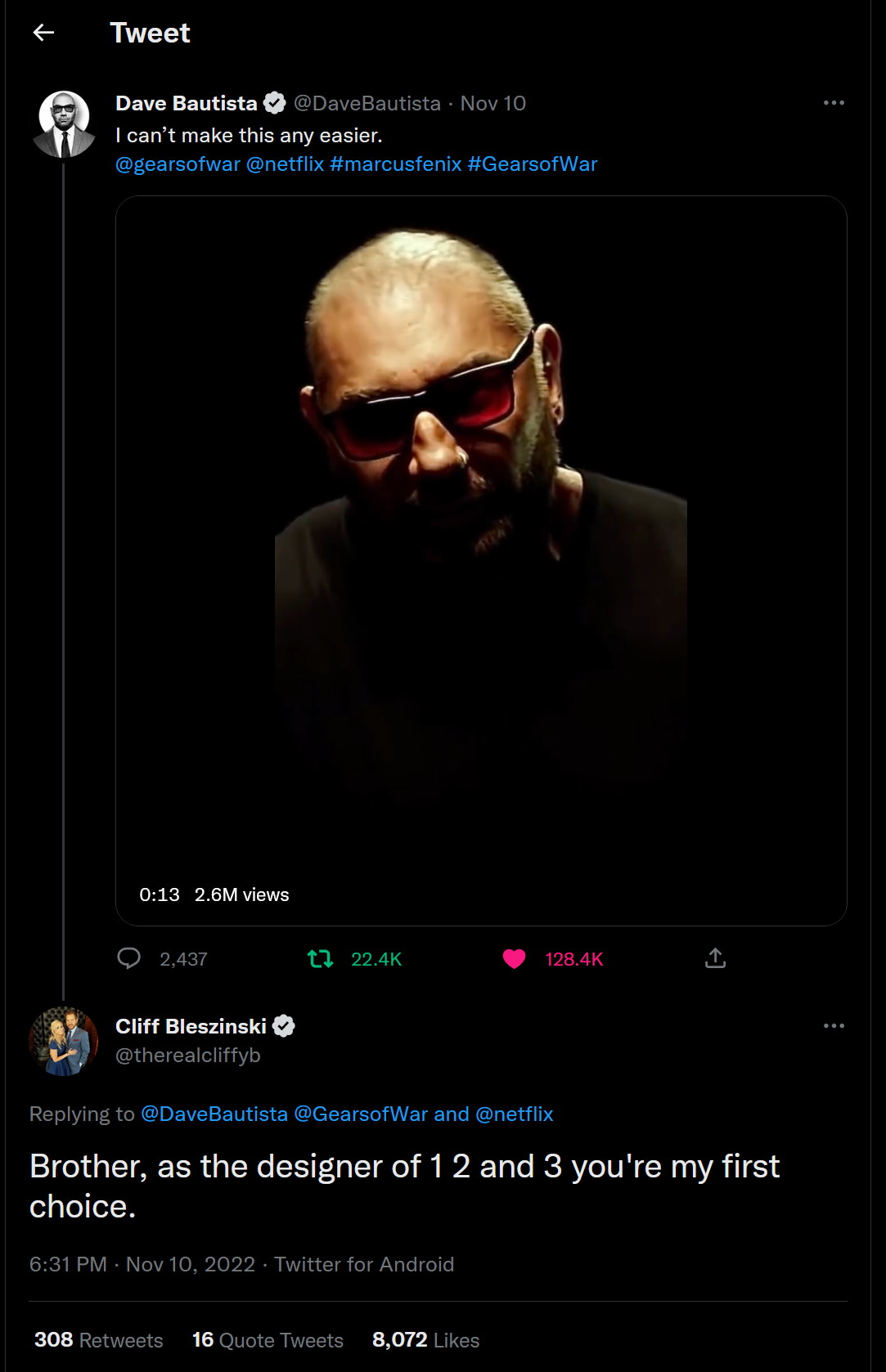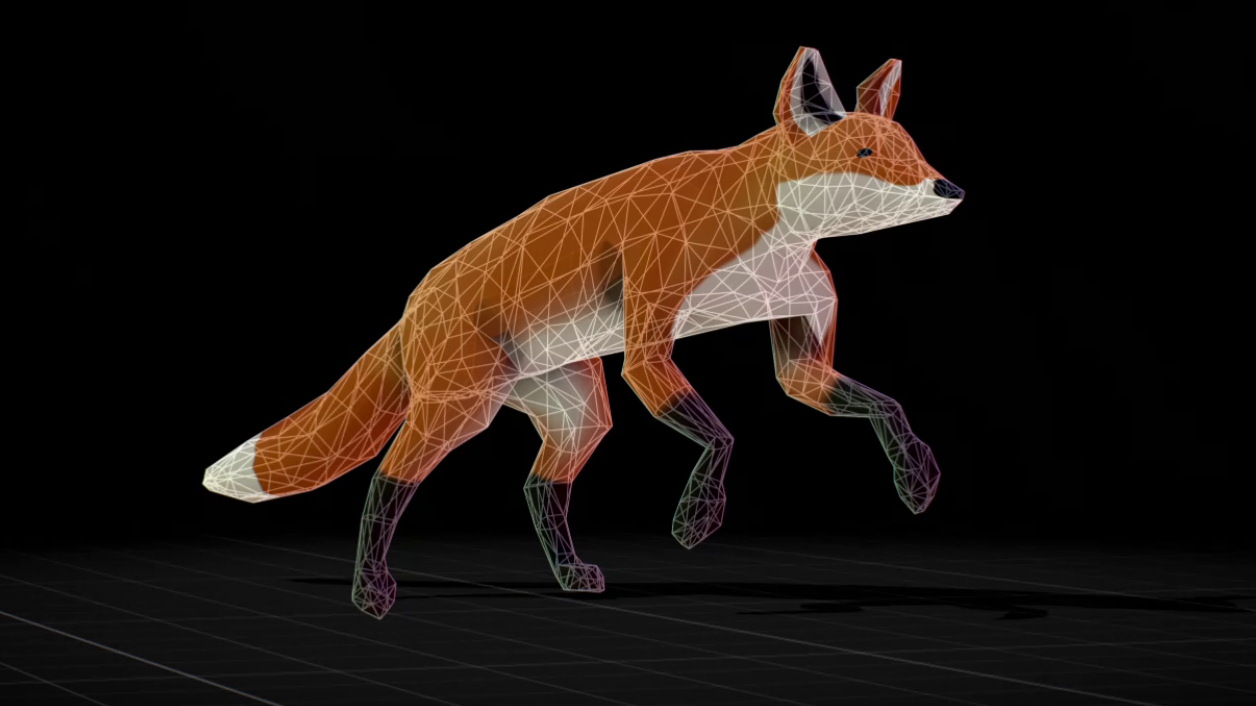From 2010 to 2014 Richard Cobbett (opens in new tab) wrote Crapshoot, a column about rolling the dice to bring random games back into the light. This week, a trip to Hull. No, wait. Phew. Not that bad.
Hell is early CD games. Wait, no, sorry. Hell is an early CD game, which wastes no time ticking off several cardinal sins of the mid-90s. Awful rendered graphics. Toe-curling cyberpunk. Celebrity cameos treated as starring roles. Being published by GameTek. The list goes on.
It was the first of Take Two’s attempts to crack what at the time seemed like the lucrative interactive movie market, the others being the deeply surreal detective game Ripper, most famous for starring Christopher Walken (along with many others, including John Rhys-Davies, with one of the best opening lines of any cameo (opens in new tab)), and Black Dahlia, whose best quality was being slightly more interesting than counting grains of sand on an oily beach.
Hell was by far the worst of the three. But it did have the most interesting premise. What if the government literally had the power to send people it disliked to Hell? Turns out… it’d be really, really stupid!
Hell is the surreal story of two future-cops, ‘the noble’ Gideon Eshanti and ‘the heroic’ Rachel Braque, working for a fascist future-police called the Hand Of God. They’re not very good at their jobs, since their approach to handling future-criminals seems to be ‘just let them go and pretend they’re informants or something’, but presumably that’s not so bad when you work for a clearly evil future-theocracy. In the future. Did I mention it’s the future? Because this is a cyberpunk game, to the point of calling itself “A CYBERPUNK THRILLER”, which means there’s going to be a lot of reminders. In the future.
For instance, this is an apartment. In the future. You can tell because instead of things like walls and desks, everything is ribbed metal and glowing blue things and odd curves and lights, more like a run-down factory than somewhere anybody sane would actually choose to live.
Unsurprisingly, working for the oppressing forces whose entire shtick is “We can send your ass to Hell, so watch it,” turns out not to be the best career move for the two, who are also lovers. As they sleep, dreaming of burning in the eternal flames of the crappiest retirement package ever, a black ops team bursts through the door to murder them both with bad guns.
One of them looks a bit like Cyclops from the X-Men, but turns out to be closer to Geordi La Forge, as Gideon takes him down with the least convincing karate chop ever clumsily rendered. It’s sad when a villain only seems to fall down out of politeness.
And speaking of bad graphics, here’s the most convincing city ever.
Despite being both surprised and up against a whole hit-team while still in their underpants, Gideon and Rachael manage to escape into the night and to the house of one of their many informants. By this point they’ve been to a laundrette and stolen some clothes, saving this being the most awkward start to an adventure since April Ryan set out on The Longest Journey wishing she’d slept in something warmer. The script is happy to help fix that though, with both of them immediately launching into Z-Grade cyberbollocks like “Few months ago we tagged some would-be desk jocks that were programming an illegal c-space.”
This is a relatively long game, though mostly because the script is stretched out to near nightmare lengths at times, and like Bloodnet, was full of wacky ideas without much real thought apparently going into making them good. In Hell, the funniest is that the readme file on the disc openly admits that everything the manual says about combat and having to pick weapons no longer applies and that now it’s all pretty much handled for you. Later, whole sections are borderline impossible without a walkthrough because the clues in the game aren’t accurate. So, yeah. Top quality product.
You do at least get to choose whether to play as Gideon or Rachel, but it doesn’t really matter because the other tags along and gets underfoot anyway. Later, you acquire party members who follow along because their virtual lives really are that empty, though again they play much less of a part in things than you’d expect and the designers clearly planned. They have a couple of inventory items each, which Gideon and Rachel end up using anyway, and otherwise stay out of the action. This is most notable with one called Cynna (geddit?), who appears all the time in the first part of the game and is built up as being important, but then vanishes and is almost never mentioned again. Her only use is having some bombs that you need near the end of the game and she doesn’t even get a line when you do.
On the plus side, this is at least a world where occasionally you can get a straight answer out of people, including Gideon and Rachael’s captain—a man who’s apparently worked behind a desk for so long, his ass needs a chair built for four. Ah, early 3D-rendered games. Perspective was not your friend.
“Cappuccino anyone?” he asks. “You must be freezing after your jog about town in your underwear.”
Hey, I said “straight answer”, not “sympathy”. In fact, he’s remarkably casual about the whole thing, having watched the footage and found it at most mildly amusing. Despite being their boss, he can’t help but point out how many sinners they’ve personally given similar treatment to, and mocks them for thinking that “being narcs for Reality Containment was doing God’s work.” His performance evaluations must be fun.
He does at least have the official word on why they ended up on the shoot-to-kill list; violating the “Artificial Realities And Extra Noumenal Environments Design, Programming and Transportation Act”. Or in short, distributing VR porn of humans and demons getting their heresy on. It’s a frame job, nobody has any question about that, but a high-level one, the captain letting them know that they’ve been set up with the help of a big name demon called “Mr. Beautiful.” Any time the sinister “Transgressions” department has heretical asses to punish, they simply go arrest this horny porn baron, and he happily fingers them.
Hmm. I should probably rephrase that.
Making things more awkward than they have to be, his hangout is in a speakeasy in a part of town called “Foggy Bottom”, in which “Everybody in the place fancies themselves a bad ass.” And its owner’s name? Swivel. This is not a game to take seriously, even early on. Case in point, this is the villain, played by Grace Jones, making a quick appearance to completely destroy any credibility her Hand of God organisation has. Her name is Imperator Solene Solux, and she is not an easy woman to get in to see (opens in new tab).
Oh. My. Word. Her only animation is waving her robot arms in the air, with Jones hitting a balance between ‘angry’ and ‘does not give a shit about acting’ that’s almost impressive.
“You disgust me! You, with your muscles and your firepower!” she sneers at one of the surviving attackers from the intro, having apparently not seen the part where he was taken out by a karate chop that couldn’t dent squishy cheese. “Do you realise that the only thing separating you from an ape is an opposable thumb? As for your balls, you obviously haven’t been using them either, so they will be mine!“
Eh, she’s still a better leader than Captain Janeway. Also, in a staggeringly awkward bit of plotting, one of the big questions around her is whether or not she’s a man or a woman, with most simply referring to her as the “Androgyne”. You’ve got to wonder if anyone mentioned this to Jones when they cast her and gave the result her face. I suspect long-distance phone calls may have been involved if so.
Anyway, want to see a puzzle? Here’s a puzzle. Can you guess the password?
Inside the speakeasy, things get weird in several ways. The first member of Team Hell is waiting to be recruited—an old flame of Gideon’s called Cynna, who wastes little time teasing Rachel about their former relationship, or rather, this being Hell, wastes a lot of time blathering at the pair without anyone apparently wanting to bring up the obvious point that this is Eddie Valiant and Jessica Rabbit levels of jarring.
Gideon is a poorly rendered and animated 3D model. Cynna is…
Weird. And having been recruited, she and Rachel get plenty of time to be catty at each other, at least until the game forgets that she exists, mostly with variants of “Hey, Rachel. Anyone ever told you you’re a bit of a tight-ass bitch.” “Yeah, but at least I’m not a dead one.” So, that’s something to look forward to for the rest of the game. Hell is indeed other people.
But one specific person stands out. Oddly, Hell wasn’t sold on being a confused mix of horror and snark, nor on being so ugly that the ugly stick broke after the first whack. The marketing said nothing about the dreadful puzzles. At no point did a preview concern itself with the metaphysical implications of the premise. No, this game was sold on one thing—one character. Mr. Beautiful. And here he is.
Yes, that’s Dennis Hopper. The Dennis Hopper. I understand Take Two was a little concerned that he might show up to the recording with a long list of demands, but in the end he brought an easy rider.
Ahem.
His presence in both this and Black Dahlia was a bit of a lucky coincidence, the story going that he was a member of the golf course where the head of Take Two also played, and he was asked on the grounds that, well, why not? His role here isn’t very long, but it’s at least pretty memorable, from his silicon coat to immediate willingness to be the seventh or so person to mock our heroes for running around in their pants at the start of the game. He’s presented as less pornographer more demonic mob boss, casually mistaking ‘having set up these two cops’ for ‘being their boss’ and declaring that they’re about to go on a mission for him—a quick jaunt into the depths of Hell to speak to his rival, the demon Sanguinarius.
“Oh, your tiny little minds can’t conceive the desperate grandeur of a demon’s dreams,” he snarls. “He wants it all and that includes my head, but I’ll be bum-buggered from Dis to Dorchester if that gun crazy diablo’s getting the drop on me.” Dennis Hopper, everyone! Round of applause.
And then it’s off to Hell. Handbasket not included.
At least Hell gets to the point quite quickly, right? Doom 3 spent most of a game before opening a portal. Here, Gideon and Rachel just pop on a helmet called a ‘psychopomp’ (in mythology, the name of an entity that escorted the dead to the afterlife, Charon and the Grim Reaper being the most famous) and boom, they’re standing in its sulphurous caverns to go chat with Sanguinarius. That was easy!
Showing exactly zero, repeat, zero compassion for the tortured souls around them, they also find themselves in one of the lamest bits of design you will ever see. Remember that thing in the readme about the combat having been changed between the manual and the final gam?. Here’s an example of what they meant. If the two go up to Sanguinarius and try to talk to him, there’s no fight. He just kills them dead. OK. Well, in fairness, no weapons. Luckily, weapons are available on the previous screen. A laser pistol. A gatling gun. A sniper rifle. If you pick one up though, the same thing happens. Huh.
The solution turns out to be to pick everything up. Armed with everything , even though each can only carry a single weapon, an automatic combat plays out in a way that was obviously meant to be interactive, but isn’t, with Sanguinarius being unceremoniously blown away. A less interesting way of playing is hard to think of. No, wait. I stand corrected. Bloodnet’s was still way more tedious.
Despite doing Mr. Beautiful’s dirty work, he still refuses to help the two. So, that was a good use of everyone’s valuable time. One unusual thing, though. Even though you can die and be tortured to death in Hell, when you return, you don’t have any of the things you picked up. Also, if you do die, there’s an ending where the Imperator is told that her minions have seen your corpses… your corpses last seen sinking into a river of lava. How curious. It’s probably nothing though. Nothing at all.
That’s for later though, with Hell again happily sinking into a mire of dribbling cyberslosh as Gideon and Rachel run around meeting the usual cast of hackers, crackers, freaks and phreaks, including a kid who seems to think one of those plasma orb things is an arcade machine, and people with names like “Pap Pap John” and “Electric Sex”. This stuff wasn’t even cool in the ’90s. Everyone knows that, right?
(Actual dialogue: “Listen, we’ve talked to these Phreaks and they’re wacked. This Wicked Stick kid’s got them wilded on getting you. I’m certain they’ll try again.” Make the hurting stop.)
On the plus side, good news for Oculus! By the end of the 21st century, virtual reality is going to be all that anybody talks about. All. The. Bloody. Time. Bad news for Oculus, it’s illegal. As in ‘get your ass to Hell’ illegal, unlike some other things. Comic books for instance… sorry, ‘comix’ are technically banned, but a few shops get the benefit of a blind eye turned their way long as they restrict their inventory. To, uh, things with names like “Sex Gods II” apparently. And “Spunko!” No comment.
Also here… wait a minute! Zoom in on that poster.
I know that picture! One second, let me dig around here…
IT’S THE DEATH SCREEN FROM BLOODNET! What the, uh, heck is that doing here? Well, it turns out that Hell isn’t simply reminiscent of Bloodnet, it’s actually from the same designers. Different developer, same creative team. Looking at their profiles over on Mobygames, they’ve also worked on a few other games we’ve seen here: Bureau 13, Private Eye, and… uh… Forbes Corporate Warrior.
That last one, I can safely say I did not see coming. Weird. Still, small universe! But goodness me. You’d think they’d have done at least a slightly better job with their second crack at this genre.
Skipping ahead pretty quickly, more of the game peels away with just about every screen. Despite not having so much as been asked for a dollar, suddenly Gideon and Rachel decide they need money to get things done, and a hacker quite casually hands over $100,000 if you simply ask her to. Puzzle! There’s a gambling puzzle, because why not, and lots of running around on subquests to help two feuding gangs, and Rachel and Gideon squabbling, and all kinds of other stuff seemingly designed to strip any sense of menace or malice out of this world—the world of Hell: A Cyberpunk Thriller. This seems an odd tactic.
To sum up how half-arsed this part of the game is, there’s a part where you need to get into the Pentagon. One of your squad has a skill called ‘Forger’, and a blank pass. You use ‘Forger Skill’ on the blank pass and get a Level 4 pass that you just hand to the guard. That is what Hell considers ‘a puzzle’. Really. This is all it takes to get access to the garage where the god queen of America keeps her car, and sabotage it. Looking at this, half an arse actually seems generous. This is quarter-buttocked game design, at best.
And the art is no better. This is what an artist actually produced when told “We need an office for a Senator.” Just saying. When a 1990s background clearly took longer to render than to model…
At least there’s a short break during all this to head back to Hell, specifically to a ‘hell pit’ used to hold hostages. In this case, the hostage is the heiress to a fortune who is condemned to being locked in a chair and having her neck snapped and healed on a constant basis, while a group of mobsters… just play poker.
“They feed us whenever we ask, but I’m always hungry,” one moans. “I drink gallons of wine and water, yet I’m always thirsty. I have recurring images of my wife crying in pain on her deathbed. Even breathing hurts. It’s like my lungs were lined with cinders. I tell you, one doesn’t have to be garrotted to be tortured.”
Somehow I doubt the girl in the chair is crying for you there, Argentina. Luckily for her, Gideon and Rachel are able to set her free, leaving the others behind. She doesn’t run though, but simply fades away into nothingness as the two return to the realm of the living. Again, probably not worth worrying about.
The reward for this, much like the reward for every subquest, makes ‘absolutely nothing’ sound generous, being mostly the chance to continue sifting through an investigation so turgid that only Gideon and Rachel’s increasing lack of sympathy for everyone they meet can can save it. You wouldn’t think that a cyberpunk game about a world infested with demons and populated with crazy killers, psionics and demon porn producers could be boring, but wow, does Hell pull it off without any style at all.
Actually, except for the demon porn producer bit, if only because it uses this set.
In fact, this is a weird bit. Gideon and Rachel get involved by volunteering to go undercover as ‘talent’ for a porn shoot (“I just want you to show me some pain! Got it? We’ll work up to agony and misery later!”), with their real goal being to assassinate the demon in charge, Asmodeus.
This all goes off without a hitch. Except that instead of exploding into maggots or turning into a puff of smoke or similar, he explodes. Well, he’s meant to explode. Actually he gives new meaning to Disco Inferno.
Yes, that quickly, he is dead. Dead, dead. He is dead. Dead dead. And then the world vanishes.
And then an error message appears. It flashes past quickly, but it’s in green, and definitely contains the commend ‘hellexec.bat’. Curiouser and more curiouser… and curiouser still when they wake back in the office to find that Asmodeus was an android all along. Finally, the two put it together. Hell is just a virtual reality simulation! When they thought they were using an evil device to travel there, really it was just a conventional VR deck. And their only clue was that nobody in this game can go for more than 10 bloody seconds without talking about virtual reality . Harvester, this is not.
“It is the greatest lie in human history. You see, from the beginning, the Hand of God knew that fear was its greatest weapon. They spent billions of dollars tapping into centuries of fear and superstition, humankind’s tribal horrors and primal fears. The military and CIA had already stockpiled immense research on the subject, and transglobal CEOs and ambitious secular politicians willingly backed the Hand. They were confident they could share in the Hand’s rule of the country, but once the gates of Hell opened, Solux swept all non-believers from power. Those were the first nights of the scrub teams.”
And now I think we know exactly why John Carmack quit id to join Oculus.
After all, who better to map out Hell than the man who bought his Ferrari by first bringing it to life?
So, how well does this twist actually work? While ridiculously foreshadowed, at least it doesn’t come completely out of nowhere—though honestly having the whole Hell thing be a lie is far, far less interesting than if it the game had played it straight. It certainly wasn’t the only such ‘cyberhell’ setup at the time, and while technically there is relatively little difference whether someone is being tortured in their head or in real life, having it all be a virtual thing from which someone just has to wake up is always going to feel a little weak. It doesn’t help that it means throwing away all the talk of factions and feuding demons from earlier on, and that even the characters become much more blasé about everyone’s suffering.
Most of the rest of the game is spent simply going into the Hell simulation to rescue people, which ends up being both surprisingly easy and weirdly slapstick. In this one for instance, you’ve got to cross the ring of fire by putting a metal disc over a steam vent and riding it across the fire…
…while another involves finding a flying animal and being flown there. Not too silly you might think, until you know that this is the flying animal in question.
That’s just not dignified. Even for a game that spends most of its time not sure how silly it wants to be. Still, that’s not to say there’s nothing unpleasant here. So, without further ado, we present a little feature called The Best of Hell, The Worst of Hell. What are some of the punishments awaiting the unwary?
Shudder. An eternity of dental work, without anaesthetic. Instead, the demon huffs all of the no-pain gas, which at least makes it easy to get rid of him by swapping his happy-time gas with nerve gas.
Not pleasant, but it could definitely be worse.
Turns out the torture isn’t starving while this fat demon eats, but having to watch him eat. Especially on Noodle Tuesdays. But what else awaits the most wretched of the damned?
NO! NOT THAT! IT’S SO BORING! ANYTHING BUT THAT!
Ahem.
With everyone finally rescued from Hell, it’s time to bring the simulation down. It being virtual and this being cyberpunk, a Disk O’ Virus is all that’s needed, though the first attempt to infiltrate results in whichever character you’re not playing as being killed by the Imperator. This is pretty much the only time this makes a difference, incidentally. Even then, it just decides which of them goes on to the final confrontation, where we find out that the Hand of God has a Jaw of Glass and goes down in a punch almost as unimpressive as the karate chop that kicked everything off.
With the Imperator dead and Hell in some mainframe’s Recycle Bin, the world is officially Saved—free for the good guys to take it over, and the surviving cop to mourn their fallen lover in their grave of honour. “At least I know you’re in Heaven,” they declare. “You’ve already survived… Hell.”
Uh. Not quite. Not quite. Quite the opposite, in fact. Though wouldn’t it be hilarious if it turned out that Hell actually was real, and saving the world from the virtual one actually condemned our heroes to eternity in the actual fires? Sadly, doesn’t happen. At least, not on camera. Though there is a really awful song played over the credits that’s not too far different from an eternity of sulphurous burning.
This is a dreadful, dreadful game, that almost seems like it realised how bad it was halfway through and decided to try playing things tongue-in-cheek instead. Much of the dialogue is intentionally very casual, with even the tortures of the damned ultimately breezed over as little more than a bit of an inconvenience. Only a couple do more than mildly complain, and as soon as they’re out, it’s as if nothing happened. It never quite manages to decide what level it’s going for though, bouncing around all of them with incredible uncertainty and a refusal to commit to either making Gideon and Rachel world-weary cynics or actually having them give much of a crap about what’s going on. They say they do, but rarely actually give any indication of it. Though that could be down to some of the flattest voice work you will ever hear.
Its hellraising does at least provide a few eye-raising moments though, with Hopper’s performance earning whatever he got paid for his afternoon in a recording booth simply by how ridiculous he ends up being. Rarely have cameos been stranger than a sarcastic porn baron who dresses like a Pentium, and it is a genuine shame that he’s not in the game for longer.
He’s got more charisma than any of the other characters, including the leads, a big villain who already serves up enough ham to make a sandwich for every single person on Earth, and the one-off demons filling the hell-pits that so tragically turn out to be virtual. Again, it makes sense for a cyberpunk game… kind of… but actually doing it would have been better. Take Two’s next game, Ripper, from the same designers, would pull something very similar, setting up a far more interesting premise than the actual game ended up supporting.
Though with far more entertaining acting, at least (opens in new tab).
Hard to remember that at one point all of this stuff was being held up as The Future, right?
Thank goodness we have broadband now, and iPads and LCD monitors and MMOs and nobody needs to jack into anything when using the net. (Any other type of jacking remains their own business). Hell was a vision of a horrible dystopia in more ways than one, but somehow, the idea that it might predict the next few years’ technology was more terrifying than the whole virtual abyss of darkness. The clothes alone. Shudder. Still, if you want to take an extended visit, here’s the entire game. And just remember, it’s on YouTube. If it doesn’t feel enough like Hell, just scroll down and read some comments.
Source link

